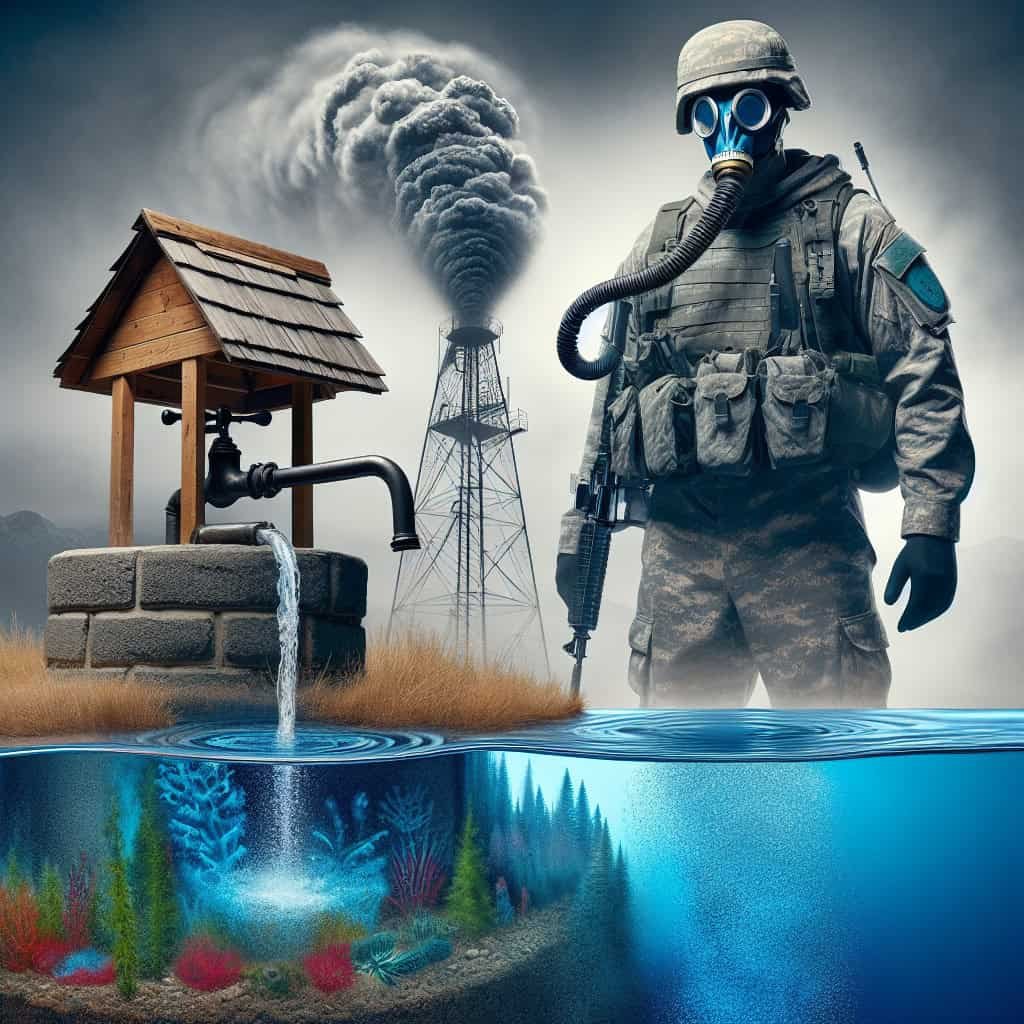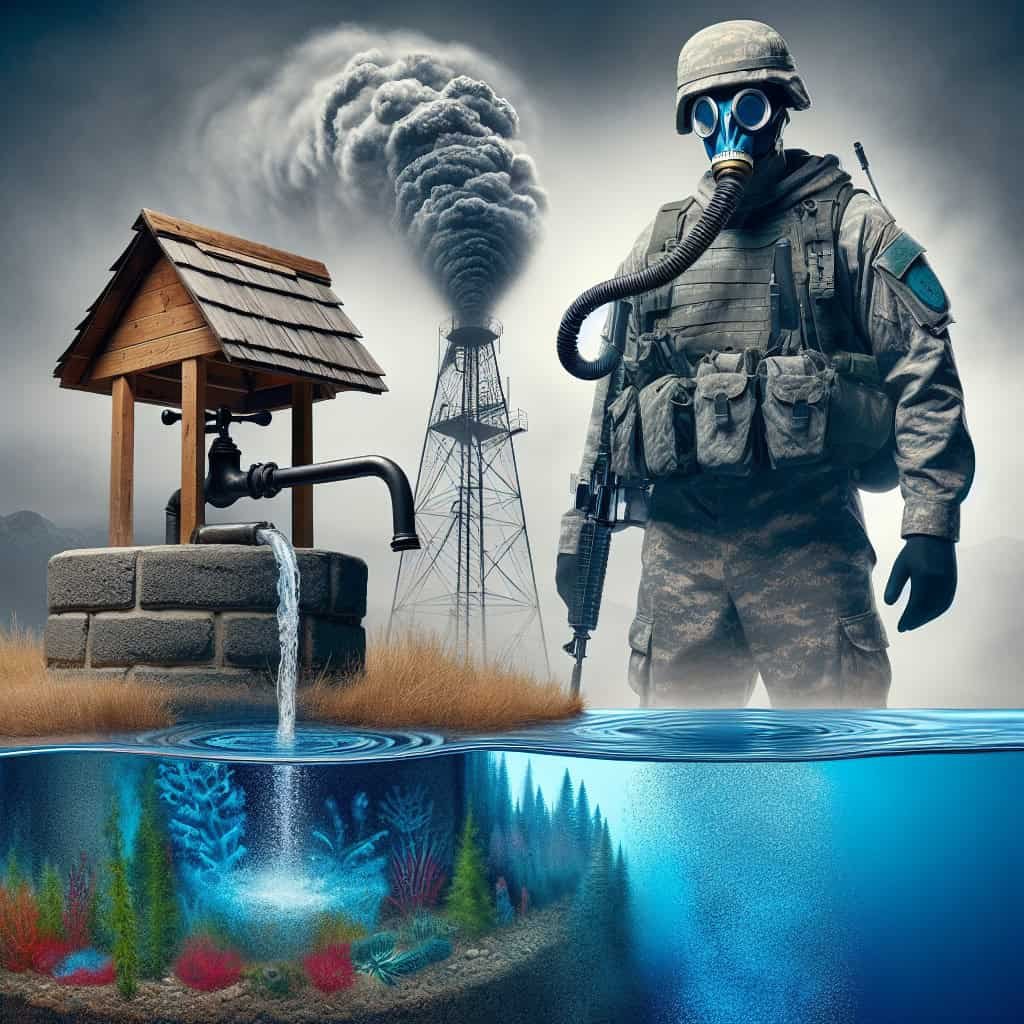Imagine living in a community where the water you drink every day is contaminated. That’s the reality for hundreds of residents in Washington state, as military testing has revealed that their drinking water wells are contaminated with PFAS (per- and polyfluoroalkyl substances). PFAS are toxic chemicals that have been linked to numerous health issues, including cancer and reproductive problems. This alarming discovery highlights the urgent need for action to address water contamination and protect the health of affected communities.
Military testing reveals hundreds of drinking water wells contaminated with PFAS in WA
Introduction
In recent military testing conducted in Washington State, alarming results have revealed that hundreds of drinking water wells are contaminated with PFAS. This contamination poses serious health risks to the affected communities, and immediate action is necessary to mitigate the situation. In this article, we will explore the background and extent of the contamination, the causes of the contamination, the health risks associated with PFAS exposure, the government’s response, the impact on the community, ongoing remediation efforts, and any legal action being taken to address this issue.
Background
PFAS stands for per- and polyfluoroalkyl substances, a group of human-made chemicals widely used in various industries due to their unique properties. They are resistant to heat, water, and oil, making them ideal for applications such as firefighting foams, non-stick cookware, waterproof clothing, and many other products. However, the widespread use and disposal of PFAS have led to their persistence in the environment, including drinking water sources.

Extent of Contamination
The recent military testing in Washington State has revealed that hundreds of drinking water wells across the state are contaminated with PFAS. The exact number of affected wells is still being determined, but initial findings indicate a significant problem. The contamination is not limited to specific areas but is widespread throughout the state, affecting communities in both urban and rural areas. These contaminated wells are a source of drinking water for many residents, putting their health at risk.
Causes of Contamination
The primary sources of PFAS contamination in drinking water wells are the disposal of industrial waste, firefighting foams, and other products containing PFAS. These chemicals can infiltrate the groundwater through various pathways, including the release of PFAS-containing wastewater into local water bodies, and the seepage of these chemicals into the soil, eventually reaching the groundwater. In some cases, the proximity to military bases or other industrial facilities has been linked to higher levels of PFAS contamination in wells.

Health Risks
Exposure to PFAS has been linked to a range of adverse health effects. These include an increased risk of cancer, liver damage, immune system dysfunction, reproductive and developmental issues, and thyroid problems. The long-term exposure to low levels of PFAS, such as those found in contaminated drinking water, is particularly concerning due to the cumulative nature of these chemicals in the body. The affected communities are rightfully concerned about the potential health consequences of ongoing exposure to PFAS-contaminated water.
Government Response
In response to the contamination crisis, the government has taken several steps to address the issue. This includes the establishment of task forces and committees to investigate the extent of the contamination, assess the health risks, and develop strategies for remediation and prevention. The government has also provided resources to affected communities, such as alternative drinking water sources and filtration systems. Additionally, regulations and guidelines are being drafted to limit the use and disposal of PFAS-containing products and substances.

Community Impact
The impact of PFAS contamination on affected communities cannot be underestimated. It has disrupted the lives of residents who rely on contaminated wells for their drinking water, causing concern and uncertainty about their health and the health of their families. The contamination has also raised questions about property values and the long-term viability of living in these areas. Furthermore, local businesses and agriculture may be affected, as the use of contaminated water for irrigation and other purposes also poses risks.
Remediation Efforts
Efforts are underway to remediate the contaminated drinking water wells and provide safe drinking water to affected communities. This includes the installation of filtration systems and the provision of alternative water sources. Ongoing monitoring and testing are essential to assess the effectiveness of these remediation efforts and ensure that the contamination is adequately addressed.

Legal Action
In response to the PFAS contamination crisis, legal action has been taken by affected communities and individuals. Lawsuits have been filed against responsible parties, including industrial facilities and government agencies, seeking compensation for damages caused by the contamination. These legal actions aim to hold accountable those who contributed to or failed to prevent the contamination, and to ensure that affected individuals and communities receive appropriate support and resources.
Conclusion
The revelation of PFAS contamination in hundreds of drinking water wells in Washington State is a significant concern for affected communities. The extent of the contamination, the potential health risks, and the impact on the community highlight the urgent need for action. The government’s response, ongoing remediation efforts, and legal action taken by affected individuals and communities are all important steps towards addressing this crisis. However, continued monitoring, testing, and collaboration between all stakeholders are crucial to achieving a comprehensive solution and ensuring the safety and well-being of the affected communities.


